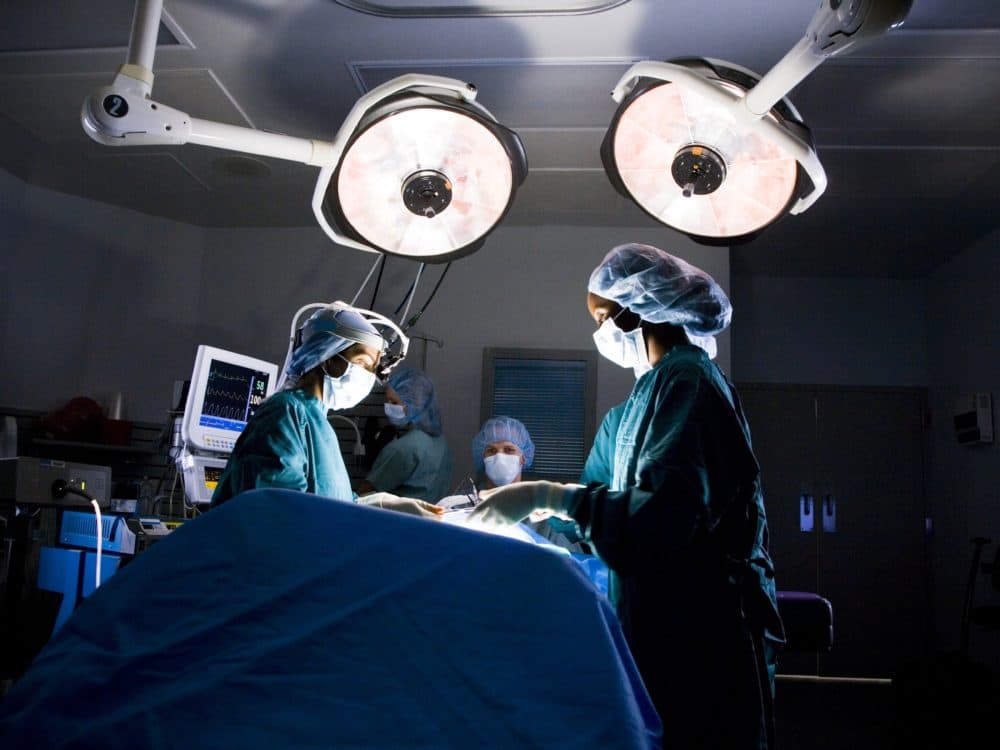Advertisement
Commentary
I'm a high-risk OB-GYN: Abortion helps me save lives

Here is a truth that no maternal fetal medicine physician wants to be a secret any longer: pregnancy can kill and abortion can save lives.
Every month for the past 15 years, I have seen pregnant people near death — liters of blood pouring from placentas intended to nourish life, acute liver failure that turns patients yellow and makes them so tired they can’t get out of bed, sudden increases in blood pressure that shut down kidneys and fill lungs with fluid.
When the fetus can survive outside the womb, these conditions always lead to delivery. When it cannot, these conditions lead to the hardest conversations. Many of my patients have made the hard decision to end their pregnancy in these settings, and so I have rarely had to bear witness to how long it takes before an ICU bed is needed, how long one can go before becoming unconscious or, rarely, how long these conditions take to kill a previously healthy person.
Today, if I practiced in many states, I would not be able to offer these patients terminations nearly as quickly as I could last week. It is even possible that without federal protections for abortion, in some states I would be forbidden from offering this life saving procedure at all. I would have to pretend abortion does not save lives. I would have to do harm.
Twenty years ago, I decided to be an obstetrician and gynecologist because I loved delivering babies. The way the human body accommodates pregnancy was and still is awe-inspiring. I also reveled in all we did not understand about gestation, unknowns that I could help to answer. I never thought about whether I would perform abortions as part of becoming an OB-GYN. My mother told stories of times when abortions were illegal, but I never imagined a time when society would choose to go backwards. Besides, I was going to be a high-risk obstetrician. I did not yet understand that abortion would be one of the many tools I would need to help pregnant people create families.
In residency in Virginia, I learned to do dilation and curettage, a procedure used to empty the uterus when a pregnancy ends spontaneously for reasons we do not understand. I was trained to use this same procedure electively when women did not want to be pregnant. I saw countless examples of situations in which a person got pregnant because they did not have access to resources I took for granted — parents who talked about the risks of sex, medical care to ask for birth control and partners who valued a woman’s health as much as a man’s. However, it was not until the last year of residency that I realized abortions would not be a transient part of my training, but a skill I needed in order to help my patients become living parents.
It was the middle of the afternoon when we accepted a young woman from West Virginia. She was 21 weeks pregnant and was flown in by helicopter. Her blood pressure was sky high. A few hours earlier, she had suffered a stroke and lost partial vision. Her fetus could not live outside of her womb for another two weeks, but she would not survive that long if we let her remain pregnant. Preeclampsia would kill her.
A provider who’d just recently joined our program was trained to do dilation and evacuation, a second trimester procedure for emptying the uterus. Prior to this, no one at my institution had the skills needed to perform a dilation and evacuation at 21 weeks. We would have been forced to induce this patient and wait for her to deliver, which, as a first-time mom, likely would have taken anywhere from one to three days. I do not believe she would have survived.
This is a skill I never enjoy using. But as a high-risk obstetrician, it is absolutely the thing I do that has saved the most lives.
This new attending’s training and skills allowed her to live — and to go on to have more beautiful children. I am sure she still mourns the loss of her first child, but a second trimester termination allowed for a future healthy family, rather than a single father with no child and a wife who died in childbirth.
It is because of this experience that I attended fellowship at a place where I could learn to perform second trimester terminations. I had come face to face with what medical care looked like with no skilled abortion providers, and I could not imagine ever being in that situation. How could I stand by and watch as a patient got sicker, and closer to death, when there was a procedure that could save her life?
As fellowship progressed, I saw even more situations in which dilation and evacuation saved lives: patients who presented with sepsis when infections raged in their uterus between 18 and 23 weeks; patients who were diagnosed with aggressive cancers needing immediate treatment they could not receive while pregnant. And so, I learned the skills needed to perform second trimester terminations. Let me be clear: this is a skill I never enjoy using. But as a high-risk obstetrician, it is absolutely the thing I do that has saved the most lives.
Even if state laws allow for terminations when a mother’s life is at risk, who will perform them?
As a health policy advocate, educator and hospital administrator, I worry daily that the change imposed on the country by the Supreme Court will mean that residents and fellows cannot learn this procedure in most states. In places like Massachusetts, with state laws that protect reproductive choice, pregnant people will likely always have access to abortions, especially in life threatening situations. However, in places like Texas, abortions will occur rarely. This will mean fewer and fewer providers in most of the country maintain this skill.
I have to believe that anti-abortion advocates do not mean for anyone to die, but they will. Even if state laws allow for terminations when a mother’s life is at risk, who will perform them? If no one is trained in second trimester termination, who will pay to fly all those patients to the few states left with skilled providers, and will high-risk patients survive long enough to find the care they need?
So, what has changed between last week and this week? Last week, pregnant people across the country could chose to end their pregnancies. This week, people in half of the country still can, and people in the other half cannot. Medical care should not depend on living in a blue state or red state. In the years ahead, people with resources will travel for elective procedures, but when crisis strikes and terminations are needed to save lives, the rich and poor will both die in the many areas where this medical procedure will be unavailable.
Then will we care more? By then our maternal mortality rate will likely exceed all comparable countries, all because a select few do not understand — or do not care to understand — that abortion is a medical procedure that saves lives.
